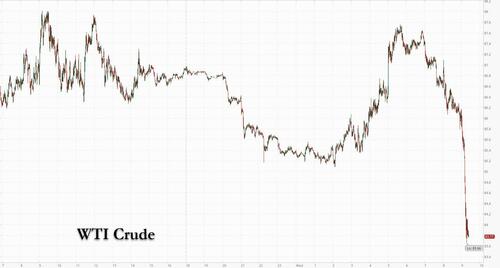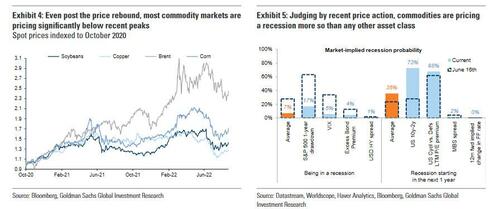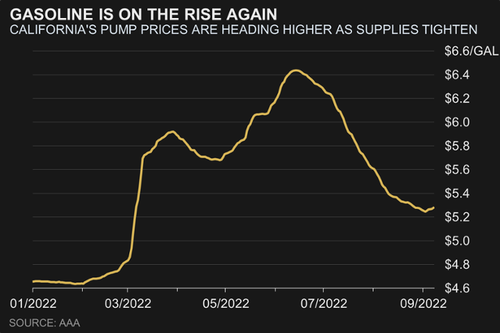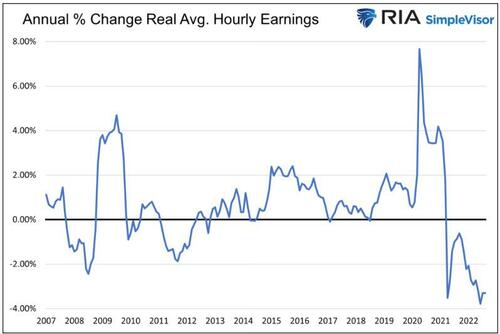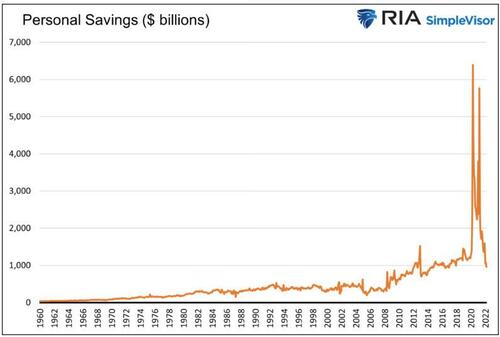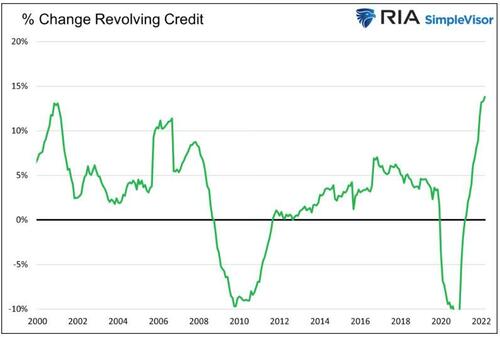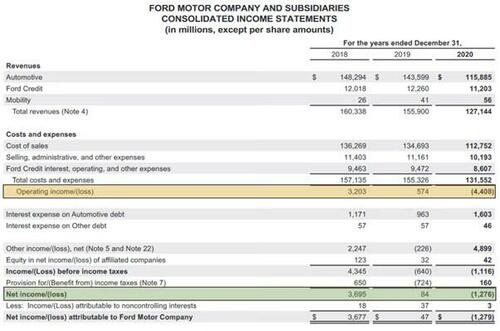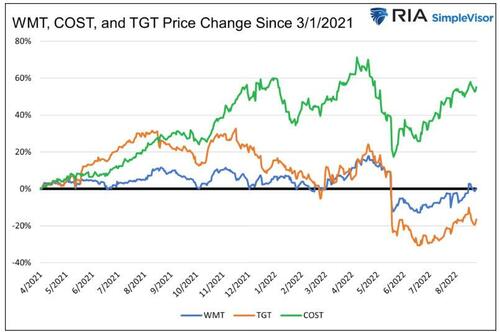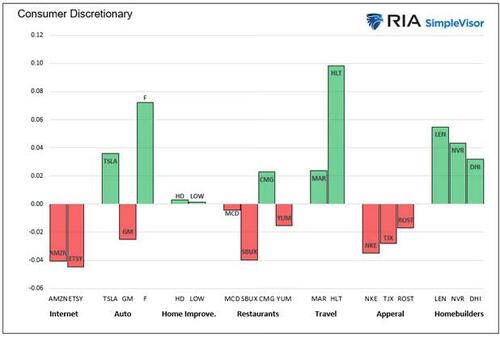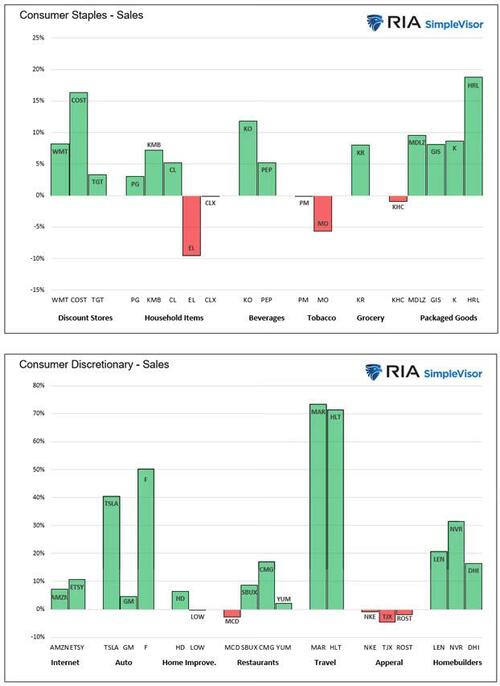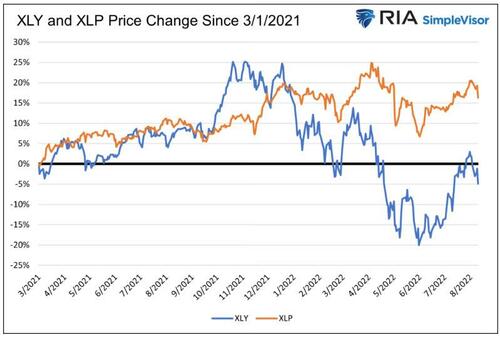[Jack Goldsmith and I will have this article out in the Texas Law Review early next year, and I’m serializing it here. There is still plenty of time for editing, so we’d love to hear any recommendations you folks might have; in the meantime, you can read the entire PDF of the latest draft (though with some formatting glitches stemming from the editing process) here.]
Let’s begin with a few words about the Dormant Commerce Clause and how it interacts with federalism principles.
The U.S. Constitution presumptively preserves state authority to control what happens within state borders, especially state power to protect citizens and residents from what legislators or voters perceive as harms. This state “police power” to regulate “health, safety, and morals” is implicitly acknowledged by the Constitution’s structure of enumerated powers, and by the Tenth Amendment.[1]
The Constitution’s preservation of the police power in the states ensures that “the facets of governing that touch on citizens’ daily lives are normally administered by smaller governments closer to the governed.”[2] Regulatory preferences differ across states because states differ in their citizens’ tastes, moral views, wealth, willingness to pay, and the like. State lawmakers are generally better positioned than federal lawmakers to ascertain such in-state preferences and implement the best policies based on them. Because policy preferences differ across states, regulating at the state level can in the aggregate satisfy more individual preferences than a uniform national law.[3] And federalism also lets states serve as “laboratories” that can experiment with various options, and show the way for other states (and perhaps for an eventual national rule).[4]
A uniform national law is sometimes appropriate to implement important national values or correct various state-level pathologies. But such uniform rules are typically imposed by a provision in the U.S. Constitution, such as the Takings Clause or the First Amendment, or by federal legislation within Congress’ enumerated powers.[5]
Alongside these principles of vertical federalism, the Constitution imposes horizontal limitations that prohibit states from unduly impinging on the prerogatives of sister states or the proper operation of the interstate system. The Full Faith and Credit and Due Process Clauses prohibit states from regulating out-of-state conduct unless the conduct involves a “significant contact” or “significant aggregation of contacts” with the state.[6] The Privileges and Immunities Clause prevents states from enacting certain types of laws that give a benefit to in-staters but not out-of-staters.[7] And of central relevance to this article, the Dormant Commerce Clause prevents states from enacting certain regulations that affect interstate commerce.[8]
Two principal tests govern Dormant Commerce Clause analysis. First, state regulations cannot discriminate against interstate commerce. In practice this usually means that state regulation cannot favor in-state over out-of-state firms.[9]
Second, neutral state regulations cannot unduly burden interstate commerce. “Where the statute regulates even-handedly to effectuate a legitimate local public interest, and its effects on interstate commerce are only incidental, it will be upheld unless the burden imposed on such commerce is clearly excessive in relation to the putative local benefits.”[10] The Supreme Court has not been clear about how to apply this undue burden test.[11] But the economic efficiency criterion that animates Dormant Commerce Clause jurisprudence suggests that the out-of-state costs of a state regulation are often justified, and that courts should balance the costs and benefits of a state regulation and strike down only those that impose costs on out-of-staters that clearly exceed the benefits they bring in-staters.[12]
A handful of Supreme Court cases have invoked the Dormant Commerce Clause to invalidate state laws on a third, ostensibly different, ground: that the laws regulate extraterritorially or impose inconsistent regulatory burdens. The extraterritoriality argument is particularly often raised in lower-court Dormant Commerce Clause challenges to state regulations of the internet. Yet the Supreme Court has not applied the extraterritoriality test or the inconsistent regulation test in recent decades,[13] and commentators and lower courts have doubted whether these tests have much practical contemporary relevance beyond what the two standard Dormant Commerce Clause principles—discrimination and undue burden—prohibit.
The Court articulated the modern extraterritoriality test in two alcohol price-affirmation cases in the 1980s.[14] Brown-Forman Distillers Corp. v. New York State Liquor Authority[15] involved a New York law under which liquor distillers could not sell to wholesalers in New York except in accordance with a monthly price schedule that affirmed that prices in New York were no higher than the lowest prices charged in other states.[16] Healy v. Beer Institute, Inc.[17] involved a Connecticut statute that required out-of-state beer shippers to affirm that prices posted for products sold to Connecticut wholesalers were, in the relevant period, no higher than prices in bordering states.[18] The Court invalidated these price affirmation schemes on the narrow grounds that they had the “practical effect of controlling . . . prices” in another state, and thus “deprive[d] businesses and consumers in other States of ‘whatever competitive advantages they may possess’ based on the conditions of the local market.”[19]
Beyond this narrow holding, Healy, relying on Brown-Forman and earlier decisions, stated more generally that the “Commerce Clause . . . precludes the application of a state statute to commerce that takes place wholly outside of the State’s borders, whether or not the commerce has effects within the State,” as well as laws for which the “practical effect of the regulation is to control conduct beyond the boundaries of the State.”[20] This dicta, if taken seriously, would require a dramatic rethinking of state authority.
But it is clear that this dicta has not and cannot be taken seriously. It is widely accepted that, consistent with the Dormant Commerce Clause, a firm doing multistate business must bear the cost of discovering and complying with state laws—tort laws, tax laws, franchise laws, health laws, privacy laws, and much more—everywhere it does business.[21]
People and firms operating in “real space” must take steps to learn and comply with state law in places they visit or do business, or must avoid visiting or doing business in those states—and that often means that the “practical effect of the regulation is to control conduct beyond the boundaries of the State.” McDonald’s can (and must) craft different franchise contracts to comply with different state franchise laws, even if most of the conduct involved in creating and implementing such contracts would likely take place in the state in which McDonald’s is headquartered. Walmart’s data collection at checkout in its thousands of stores must conform to the potentially different privacy laws in all fifty states. Conagra can label its cooking oil “100% Natural,” but may need to include different disclaimers in different states, to the extent that the label is seen as potentially misleading.
One “practical effect” of all these state schemes is the cost—legal cost, compliance cost, and more—that the firms incur to conform their business practices to the different state laws where they do business. Another “practical effect” may be to encourage such firms to devise uniform contracts, privacy practices, and labeling schemes that can work in all states, often by adhering to the most demanding state law. In these senses, state laws regularly and pervasively apply to and impose costs on, and thus “control,” or at least affect, the conduct of firms operating in other states.
Because state laws regularly and lawfully impose extraterritorial costs, and because a literal application of the dicta from Healy and Brown-Forman might invalidate wide swaths of standard conflict-of-laws decisionmaking, judges and commentators have searched for a narrower principle to explain the extraterritoriality cases. The Supreme Court has in practice been unwilling to extend the principle beyond the facts of Healy and Brown-Forman, which involved laws that by “express terms” or “inevitable effect” regulate out-of-state commerce.[22] Some contend that the extraterritoriality cases are best read to invalidate only state laws that “discriminat[e] against out-of-state rivals or consumers”—that is, extraterritoriality must be understood as an application of the first settled principle under the Dormant Commerce Clause.[23]
Others maintain that “extraterritoriality analysis . . . [is] appropriately regarded as [a] facet[] of the . . . balancing test”—that is, the second settled principle under the Dormant Commerce Clause.[24] The conclusion that the extraterritoriality principle is just a special case of one or both of the standard Dormant Commerce Clause tests makes sense of the decided cases, and of the Court’s recent insistence that “two primary principles”—antidiscrimination and prohibition on undue burdens—”mark the boundaries of a State’s authority to regulate interstate commerce.”[25] It is also suggested by the Supreme Court’s non-application of an independent exterritoriality test in almost two decades;[26] by its not invalidating a state law on that ground in over three decades;[27] and by its growing skepticism about its broader Dormant Commerce Clause jurisprudence in recent decades.[28]
The same basic analysis applies to the Dormant Commerce Clause’s ostensible prohibition on state regulations that “adversely affect interstate commerce by subjecting activities to inconsistent regulations.”[29] This test, too, cannot be applied literally. As discussed above, it is a foundational principle of our federal system that states differ in their values and policy preferences, and thus can and do regulate differently. Firms operating in different states typically must comply with scores of inconsistent regulations, even if doing so is more costly than complying with be a uniform national rule would be.
This reality, and a close reading of the cases, has led many commentators to conclude that the Supreme Court’s inconsistent-regulation cases require no more than an application of the broader undue burden test.[30] The Court has not applied the inconsistent regulations test in three decades, since Healy. And applying the undue burden test, without mentioning extraterritoriality, the Court in 2018 rejected a Dormant Commerce Clause argument that was premised on the burdens of “subjecting retailers to [differing] tax-collection obligations in thousands of different taxing jurisdictions.”[31]
[1]. See U.S. Const. amend. X (“The powers not delegated to the United States by the Constitution, nor prohibited by it to the States, are reserved to the States respectively, or to the People.”).
[2]. Nat’l Fed. of Indep. Business v. Sebelius, 567 U.S. 519, 536 (2012).
[3]. Michael McConnell, Federalism: Evaluating the Founders’ Design, 54 U. Chi. L. Rev. 1484, 1493–94 (1987).
[4]. See Ariz. State Legislature v. Ariz. Indep. Redistricting Comm’n, 135 S. Ct. 2652, 2673 (2015) (“This Court has long recognized the role of the States as laboratories for devising solutions to difficult legal problems.”) (cleaned up); New State Ice Co. v. Liebmann, 285 U.S. 262, 311 (1932) (Brandeis, J., dissenting) (“It is one of the happy incidents of the federal system that a single courageous State may, if its citizens choose, serve as a laboratory; and try novel social and economic experiments without risk to the rest of the country.”).
[5]. The post-Erie federal common law powers of federal courts are ultimately justified as authorized or grounded in a federal constitutional or statutory enactment. See Larry Kramer, The Lawmaking Power of the Federal Courts, 12 Pace L. Rev. 263, 268–88 (1992); Henry J. Friendly, In Praise of Erie–And of the New Federal Common Law, 39 N.Y.U. L. Rev. 383, 407 (1964).
[6]. Phillips Petroleum Co. v. Shutts, 472 U.S. 797, 818 (1985).
[7]. Austin v. New Hampshire, 420 U.S. 656 (1975).
[8]. Although the Constitution affirmatively grants Congress the power “[t]o regulate Commerce . . . among the several States,” Art. I, § 8, cl. 3, the Supreme Court’s Dormant Commerce Clause jurisprudence has recognized that the Commerce Clause limits some state regulation that affects interstate commerce, even absent congressional regulation.
[9]. See, e.g. South Dakota v. Wayfair, 138 S. Ct. 2080, 2091 (2018); Granholm v. Heald, 544 U.S. 460, 472 (2005); Hughes v. Oklahoma, 441 U.S. 322, 337 (1979). The Dormant Commerce Clause and the Privileges and Immunities Clause both govern state legislation that discriminates against out-of-staters. But the Dormant Commerce Clause, unlike the Privileges and Immunities Clause, protects corporations. See Blake v. McClung, 172 U.S. 239 (1898) (corporations are not “citizens” under the Privileges and Immunities Clause and thus cannot benefit from it).
[10]. Pike v. Bruce Church, Inc., 397 U.S. 137, 142 (1970).
[11]. Indeed, the Justices have expressed skepticism about their ability to do so. General Motors Corp. v. Tracy, 519 U.S. 278, 308–09 (1997) (every opinion questions Court’s competence at implementing undue burden test).
[12]. See Goldsmith & Sykes, supra note 11, at 798–802. On economic efficiency as the touchstone for Dormant Commerce Clause analysis, see Saul Levmore, Interstate Exploitation and Judicial Intervention, 69 Va. L. Rev. 563, 567–68 (1983); Mark Tushnet, Rethinking the Dormant Commerce Clause, 1979 Wis. L. Rev. 125, 130–40.
[13]. The Supreme Court may soon revisit the extraterritoriality test, see National Pork Producers Council v. Ross, No. 21-468, cert. granted, Mar. 28, 2022 (raising question whether California’s import restriction on pork raises without space and related allowances, and which allegedly “has dramatic economic effects largely outside of the state and requires pervasive changes to an integrated nationwide industry state a violation of the dormant Commerce Clause, or whether the extraterritoriality principle described in this Court’s decisions is now a dead letter”), reviewing 6 F.4th 1021 (9th Cir. 2021). As noted above, we will publish a follow-up article in 102 Tex. L. Rev. Online when Pork Producers is decided, discussing how it affects our analysis.
[14]. Earlier in the decade, a plurality of the Court in Edgar v. MITE Corp., 457 U.S. 624 (1982), struck down an Illinois antitakeover law that the plurality concluded had “sweeping extraterritorial effect” because it “purports to regulate directly and to interdict interstate commerce, including commerce wholly outside the State.” A majority of the Court concluded that the statute did not survive the undue burden balancing test. For hints of the extraterritoriality doctrine decades earlier, see Baldwin v. G.A.F. Seelig, Inc., 294 U.S. 511 (1935).
[15]
[16]. 476 U.S. 573 (1986).
[17]
[18]. 491 U.S. 324 (1989).
[19]. Healy, 491 U.S. at 338–39 (quoting in part Brown-Forman, 476 U.S. at 580); see also Brown-Forman, 476 U.S. at 582–84. Both decisions also concluded that the price affirmation statutes were invalid because they “[f]orced a merchant to seek regulatory approval in one State before undertaking a transaction in another.” Healy, 491 U.S. at 334 (quoting Brown-Forman, 476 U.S. at 582).
[20]. Healy, 491 U.S. at 336.
[21]. See, e.g., Am. Trucking Ass’ns, Inc. v. Michigan Pub. Serv. Comm’n, 545 U.S. 429, 437–38 (2005) (acceptable under Dormant Commerce Clause for an interstate trucking firm to pay local fees everywhere that it does business); Exxon Corp. v. Governor of Maryland, 437 U.S. 117, 127–28 (1978) (Dormant Commerce Clause “protects the interstate market, not particular interstate firms, from prohibitive or burdensome regulations” in states where it does business); Online Merchants Guild v. Cameron, 995 F.3d 540 (6th Cir. 2021) (“Entities doing business in multiple states must comply with those states’ valid consumer protection laws—this is nothing new.”); Kearney v. Salomon Smith Barney, Inc., 137 P.3d 914 (Cal. 2006) (“[A]s a general matter, a company that conducts business in numerous states ordinarily is required to make itself aware of and comply with the law of a state in which it chooses to do business.”).
[22]. In Pharmaceutical Research & Mfrs. of America v. Walsh, 538 U.S. 644 (2003), the Court with little analysis rejected petitioners’ argument that a Maine prescription drug rebate program violated the extraterritoriality prong of the Dormant Commerce Clause. The Court suggested that the extraterritoriality cases were limited to laws, like the “price control or price affirmation statutes,” that “regulate the price of any out-of-state transaction, either by its express terms or by its inevitable effect.” Id. at 669. Many lower court cases take a similar position. See, e.g., Energy & Env’t Legal Inst. v. Epel, 793 F.3d 1169, 1173 (10th Cir. 2015) (Gorsuch, J.) (rejecting application of extraterritoriality doctrine to statute that “isn’t a price control statute” and “doesn’t link prices paid in Colorado with those paid out of state” in part because “the Supreme Court has emphasized as we do that the [extraterritoriality] line of cases concerns only ‘price control or price affirmation statutes’ that involve ‘tying the price of . . . in-state products to out-of-state prices'”); Ass’n des Eleveurs de Canards et d’Oies du Quebec v. Harris, 729 F.3d 937, 951 (9th Cir. 2013) (concluding on the basis of Walsh that the extraterritoriality principle is “not applicable to a statute that does not dictate the price of a product and does not tie the price of its in-state products to out-of-state prices”); IMS Health Inc. v. Mills, 616 F.3d 7, 30 (1st Cir. 2010), vacated and remanded on other grounds, IMS Health, Inc. v. Schneider, 131 S. Ct. 3091 (2011) (characterizing the Brown-Forman line of cases as bearing on (1) “price-affirmation statutes that force regulated entities to certify that the in-state price they charge for a good is no higher than the price they charge out of state” and (2) “statutes that ‘force an out-of-state merchant to seek regulatory approval in one State before undertaking a transaction in another'”); Vizio, Inc v. Klee, 886 F.3d 249, 255–56 (2d Cir. 2018) (rejecting extraterritoriality challenge when statute did not make “specific reference” to out-of-state pricing and “attach[] in-state consequences where the pricing terms violate[d] the statute[]”); see also Brannon P. Denning, Extraterritoriality and the Dormant Commerce Clause: A Doctrinal Post-Mortem, 73 La. L. Rev. 979, 979–80 (2013) (Walsh indicates that the extraterritoriality doctrine in “the strong form articulated by the Court in the 1980s is dead, an unlikely to be revived by the Current Court”). But see Ass’n for Accessible Meds. v. Frosh, 887 F.3d 664, 669–70 (4th Cir. 2018) (rejecting this reading of Walsh).
[23]. Epel, 793 F.3d at 1173; cf. Nat’l Solid Wastes Mgmt. Ass’n v. Meyer, 63 F.3d 652, 661 n.10 (7th Cir. 1995) (“We have no need to determine whether the issue of extraterritorial reach ought to be analyzed distinctly from the issue of discrimination against interstate commerce.”); Cotto Waxo Co. v. Williams, 46 F.3d 790, 793 & n.3 (8th Cir. 1995) (“it may . . . be correct to say that ‘extraterritorial reach’ is a special example of ‘directly’ regulating interstate commerce” and thus discriminating against it).
[24]. State v. Heckel, 143 Wash. 2d 824, 837 (2001); see also Am. Beverage Ass’n v. Snyder, 735 F.3d 362, 379–81 (6th Cir. 2013) (Sutton, J., concurring) (arguing that extraterritoriality principle is unnecessary to the decided cases and should play no role in Dormant Commerce Clause analysis beyond the already-problematic undue burden balancing test); Nat’l Elec. Mfrs. Ass’n v. Sorrell, 272 F.3d 104, 110 (2d Cir. 2001) (extraterritoriality principle in Healy and Brown-Forman invalidates state regulations that “disproportionately burden interstate commerce” because they have “the practical effect of requiring out-of-state commerce to be conducted at the regulating state’s direction”); Goldsmith & Sykes, supra note 11, at 804; Lee Biddle, State Regulation of the Internet: Where Does the Balance of Federalist Power Lie?, 37 Cal. W. L. Rev. 161, 167 (2000); cf. Gillian E. Metzger, Congress, Article IV, and Interstate Relations, 120 Harv. L. Rev. 1468, 1521 (2007) (“In practice, states exert regulatory control over each other all the time. . . . The prohibition on extraterritorial legislation is thus understood only to constrain a state from formally asserting legal authority outside its borders. . . .”).
[25]. South Dakota v. Wayfair, Inc., 138 S. Ct. 2080, 2090 (2018).
[26]. The last case that clearly applied the extraterritoriality principle was Walsh in 2003. As then-Judge Gorsuch put it, extraterritoriality is “the most dormant” strand of Dormant Commerce Clause doctrine. Energy & Env’t Legal Inst. v. Epel, 793 F.3d 1169, 1172 (10th Cir. 2015). As noted supra note 25, the Court recently granted certiorari in a case that raises the continuing validity of the extraterritoriality prong of the dormant commerce clause.
[27]. The last case to invalidate a state law based on the extraterritoriality principle was Healy, which was decided in 1989. One could argue that BMW of N. Am. v. Gore, 517 U.S. 559 (1996), invalidated an Alabama punitive damages award based on the extraterritoriality principle since it cited Healy and Beer Institute. But the case was about the Due Process Clause, not the Dormant Commerce Clause, the Court did not discuss extraterritoriality per se, and the Court later made clear that the Dormant Commerce Clause was not relevant to excessive cross-border punitive damages. See State Farm Mut. Auto. Ins. Co. v. Campbell, 538 U.S. 408, 416 (2003).
[28]. Wayfair, Inc., 138 S. Ct. at 2100 (Thomas, J, concurring) (noting that the Court’s “entire negative Commerce Clause jurisprudence” can “no longer be rationally justified”); id. at 2100–01 (Gorsuch, J., concurring) (questioning whether and how much of the Court’s Dormant Commerce Clause jurisprudence “can be squared with the text of the Commerce Clause, justified by stare decisis, or defended as misbranded products of federalism or antidiscrimination imperatives flowing from Article IV’s Privileges and Immunities Clause”); Denning, supra note 34, at 990–92 (explaining the ways that the Court had by 2013 grown hostile or indifferent to its traditional Dormant Commerce Clause tests).
[29]. CTS Corp. v. Dynamics Corp. of Am., 481 U.S. 69, 88 (1987); Edgar v. MITE Corp., 457 U.S. 624 (1982). An earlier generation of cases involving state rules regulating cross-border transportation invoked the inconsistent-regulation idea. See, e.g., Kassel v. Consol. Freightways Corp., 450 U.S. 662 (1981) (invalidating an Iowa restriction on truck length); S. Pac. Co. v. Arizona, 325 U.S. 761 (1945) (invalidating an Arizona regulation limiting train lengths).
[30]. Denning, supra note 34, at 1006–07; Goldsmith & Sykes, supra note 11, at 806–07; Donald H. Regan, The Supreme Court and State Protectionism: Making Sense of the Dormant Commerce Clause, 84 Mich. L. Rev. 1091, 1110–25 (1986) (arguing that the transportation cases invalidated on inconsistent regulation grounds are an instance of balancing); Daniel R. Fischel, From MITE to CTS: State Anti-Takeover Statutes, the Williams Act, the Commerce Clause, and Insider Trading, 1987 Sup. Ct. Rev. 47, 90 (interpreting CTS Corp. as a balancing case). Many lower courts have taken this position as well, see, e.g., Ward v. United Airlines, Inc., 986 F.3d 1234 (9th Cir. 2021); Nat’l Ass’n of Optometrists & Opticians v. Harris, 682 F.3d 1144 (9th Cir. 2012), and some of the Court’s inconsistent-regulation cases are fairly explicit about balancing, see, e.g., Bibb v. Navajo Freight Lines, Inc., 359 U.S. 520, 529–30 (1959) (balancing “deleterious effect which [regulation] will have” against regulation’s putatively “inconclusive” safety benefits).
[31]. South Dakota v. Wayfair Inc., 138 S. Ct. 2080, 2093 (2018).
The post The Dormant Commerce Clause and Geolocation: Some Background About Federalism appeared first on Reason.com.
from Latest https://ift.tt/aEv103X
via IFTTT

